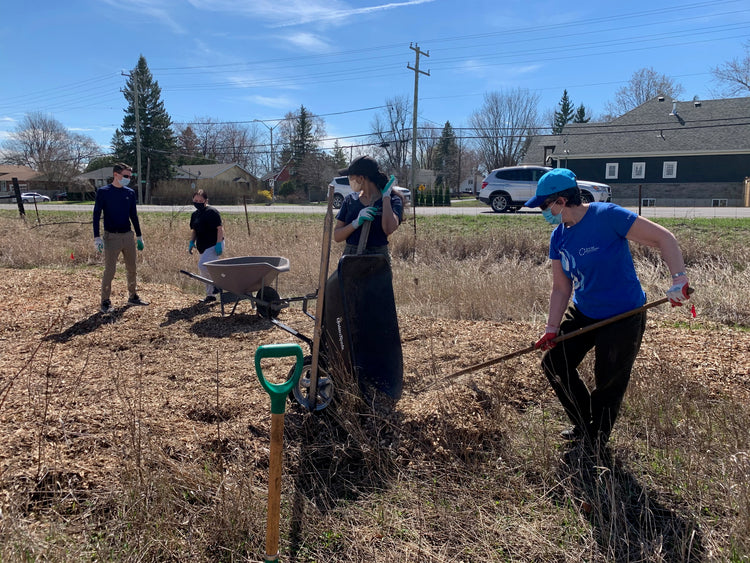"What are soils’ needs though? It depends on how we interpret the meaning of soil... if we see it as a web of relationality, then what it needs is the interconnectedness among beings that makes soil, soil. In other words, what soil is or becomes is what soil needs, which would have to be understood through our conversations with soil, and these conversations will also help us understand what humanity is and what humans really need." Zhuonan Liu
How does seeing the forest floor is an interconnected living community, a web of relations, influence how we prepare the forest floor?

In urban areas, too often we've treated soil as an object, as dirt. As a result, as James R. Urban illustrates in the above image, soil is compacted, low in organic matter, and low in fungi. Consider the relationality within most urban soils vs the relationality in a gram of forest soil:
In a gram of forest soil live between ten million and one trillion bacterial cells and dozens or hundreds of meters of fungal mycelia. Each one of these cells is in chemical conversation with those around it. Should a plant root poke its head into this network of microbes, chatter turns to clamor. Bacteria that halo the root tip send hormone signals promoting plant growth. Plant chemicals feed and house bacteria. Simultaneously, fungus and root converse and, if the talk goes well, press membrane-to-membrane, allowing faster, more open exchanges. When danger appears — pathogens or herbivores — the network carries this news through its multispecies strands. David George Haskell
Root development of the little trees is influenced by the composition of the soil: roots grow searching for water, oxygen, organic matter and nutrients, and avoiding obstacles such as compacted soils and rocks.
Our goal, when preparing the forest floor, is to help restore the relationality in the soil so that, in turn, the seedlings can form partnerships with mycorrhizal networks and Indigenous microorganisms. These partnerships improve nitrogen fixation, help suppress diseases, boost soil fertility, stimulate plant growth hormones, and improve biodegradation (breaking down organic matter into compost).
Urban soils and soils previously covered by grass are dominated by bacteria (0:5 to 0:1). Forest soils have a much higher fungi to bacteria ratio (from 5:1 up to 100:1). Because fungi love woody, high carbon materials such as leaves, straw and arborist woodchips, at Little Forests Kingston we use a three layer no dig method of preparing the forest floor.
Layer 1: 10-15 cm (4-6") leaves or straw
Layer 2: 1.25-2.5 cm (.5-1") compost or old manure for nitrogen
Layer 3: 10-15 cm (4-6") wood chips (preferably ramial chipped wood)

We then leave the layers to sit, ideally for a minimum of 6 months, so the soil organisms can do their magic.
“This is our work as humans in this time. To build good soil in our gardens, to build good soil culturally and socially, and to create potential for the for the future. What will endure through almost any kind of change? The regenerative capacity of the earth. We can help create conditions for renewal.” Robin Wall Kimmerer
When we plant, we had a handful of forest soil to each planting hole to help restore of the microbial and fungal diversity to the new forest floor. This year, we're also looking at cultivating Indigenous microorganisms.

